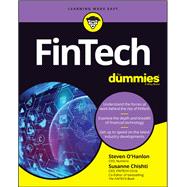Examine the depth and breadth of financial technology
This comprehensive, hands-on guide is the go-to source for everything you need to confidently navigate the ever-changing scene of this booming industry. FinTech For Dummies will shed light on this rapidly changing landscape making it an invaluable source of information for anybody working in or interested in this space. This book provides insights, knowledge and guidance from industry experts Steve O’Hanlon and Susanne Chishti on the following:
- Gaining insight fastest growing market segment of the financial markets
- Learning the core decision making to effect a growth plan
- Securing knowledge of the fastest growing fintech companies in the world
- Navigating the fintech world
- The ingredients into building a FinTech company








